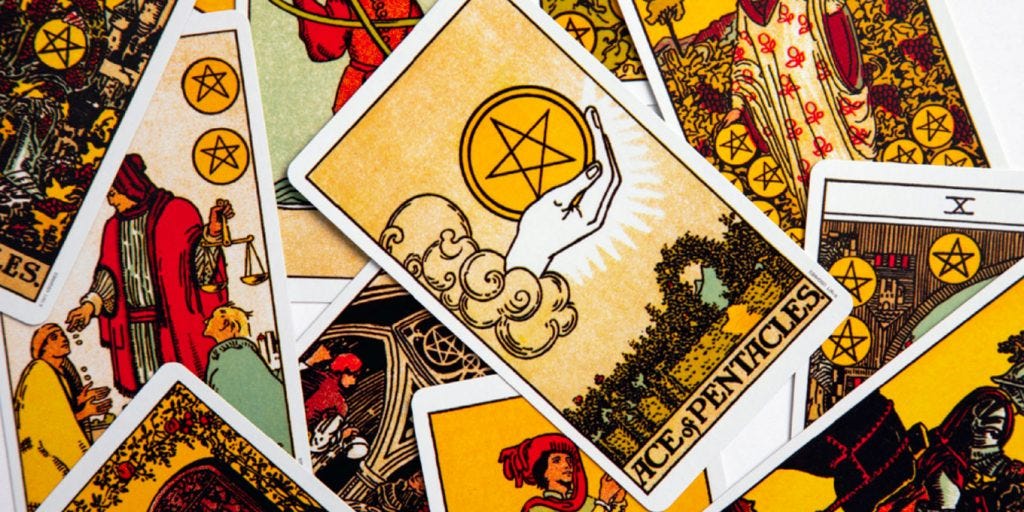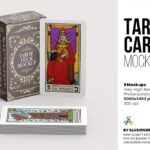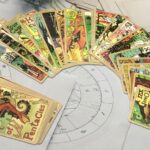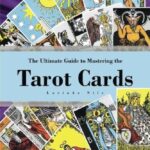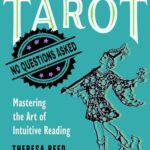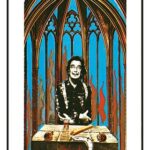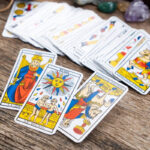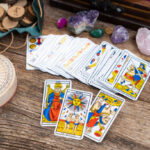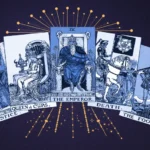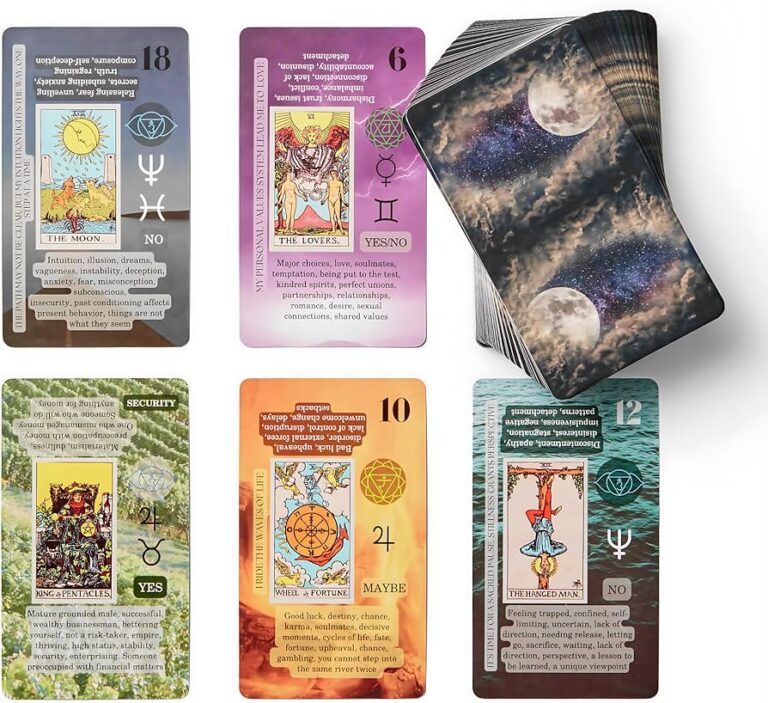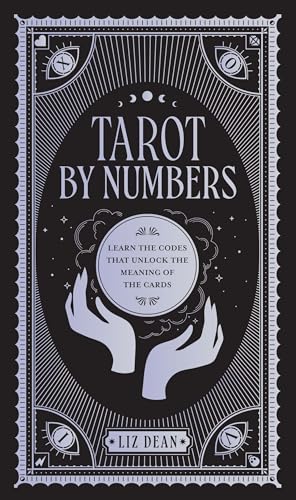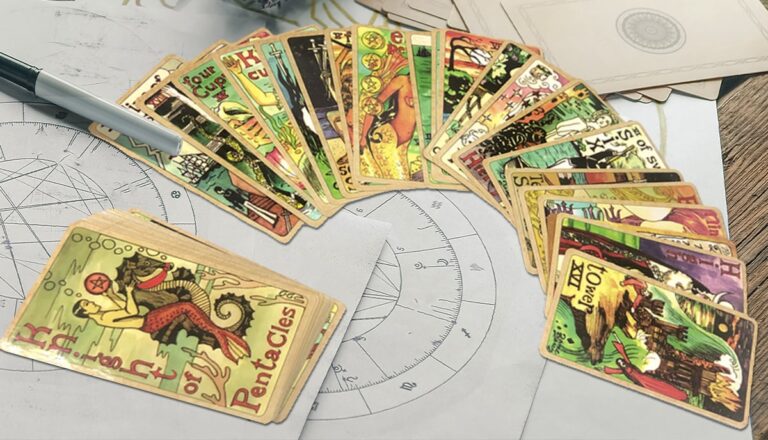How Do Tarot Cards Work : Unveiling the Mystical Secrets
Tarot cards work by tapping into the subconscious mind to provide insights and guidance. Tarot cards have been used for centuries as a tool for divination and self-reflection.
The deck is made up of 78 cards, each with its own imagery and symbolism. During a reading, the reader or querent (the person seeking guidance) will shuffle the cards and draw a certain number which are then interpreted based on their placement and relationships to each other.
The meaning of the cards is not fixed, allowing for a wide range of interpretations depending on the reader’s intuition and the specific situation at hand. Tarot cards are not magical or supernatural; instead, they serve as a mirror for the subconscious mind, providing a framework for reflection and insight into one’s life. Whether used for entertainment or serious introspection, tarot cards can offer a fresh perspective and help in making decisions.
Understanding The History
The history of tarot cards dates back centuries, and understanding their origins and evolution can provide valuable insights into how tarot cards work. Delving into the historical context of tarot cards can shed light on their purpose and significance, offering a deeper appreciation for this ancient form of divination.
Origins Of Tarot Cards
The origins of tarot cards are shrouded in mystery, with their exact beginnings remaining the subject of much debate among historians and scholars. While their precise origins are elusive, it is widely believed that tarot cards emerged in the 15th century in Europe, possibly originating in Italy or France. Initially, tarot cards were not used for mystical practices but were instead designed for playing games.
However, over time, tarot cards began to take on a more esoteric significance, with various interpretations and uses emerging. The symbolism and imagery depicted on the cards became linked to spiritual and metaphysical concepts, leading to their adoption as a tool for divination and self-reflection.
Evolution Of Tarot Reading
As the use of tarot cards evolved, so too did the methods of tarot reading. The practice of tarot reading progressed from simple card games to a nuanced form of divination, with each card holding its own symbolic significance and interpretation. Tarot readers developed various spreads and layouts to facilitate different types of readings, catering to diverse inquiries and areas of life.
With the rise of interest in mysticism and the occult during the 19th and 20th centuries, tarot reading gained widespread popularity among spiritual seekers and individuals seeking guidance. This surge in interest in tarot cards led to the development of different tarot decks, each featuring unique artistic styles and thematic interpretations.

Intricacies Of Tarot Card Decks
Understanding the intricacies of tarot card decks can provide insights into their mysterious workings. The structure of a tarot deck and the significance of each card play an integral role in the meaningful interpretations derived from these ancient tools. Delving into the layers of symbolism and meaning within the cards allows for a deeper understanding of how tarot cards work and their relevance in spiritual and intuitive practices.
Structure Of A Tarot Deck
The standard tarot deck consists of 78 cards, comprising two main sections: the Major Arcana and the Minor Arcana. The Major Arcana consists of 22 cards, each representative of major life events and lessons. On the other hand, the Minor Arcana comprises 56 cards, divided into four suits – usually swords, pentacles, cups, and wands – each associated with different aspects of daily life and human experiences.
Significance Of Each Card
Every card in a tarot deck holds its own unique symbolism and meaning, contributing to the rich tapestry of interpretations. Whether it’s the Empress representing fertility and nurturing, or the Tower symbolizing upheaval and unexpected change, each card holds profound significance in the context of a reading. The intricate details, imagery, and esoteric symbolism within the cards facilitate a deeper exploration of the human psyche and the spiritual realms.
The Art Of Tarot Reading
The Art of Tarot Reading holds a mystique that has fascinated people for centuries. Tarot cards can offer insights into the past, present, and future, providing guidance and clarity to those seeking answers. While some may perceive tarot reading as purely mystical, others view it as a form of introspection and self-reflection. Understanding the mechanics and process behind tarot reading can shed light on the profound impact it can have on individuals. Let’s delve into the intricate world of tarot reading and explore the role of the tarot reader and techniques for interpreting cards.
Role Of The Tarot Reader
The tarot reader plays a pivotal role in guiding the tarot reading process. A skilled tarot reader is adept at not only interpreting the cards but also creating a safe and supportive environment for the seeker. Communication and intuition are essential elements of a tarot reader’s role. By establishing an open dialogue with the seeker and tapping into their intuition, the tarot reader can offer empathetic guidance and assistance in navigating life’s challenges.
Techniques For Interpreting Cards
Interpreting tarot cards involves a blend of knowledge, intuition, and symbolism. Tarot readers employ various techniques to derive meaning from the cards, such as visual cues, numerology, and intuitive insights. Utilizing tarot spreads is another technique that provides a framework for interpreting the relationships between the cards and their significance in relation to each other. Additionally, tarot readers often rely on their connection to the universal consciousness to gain deeper insights, allowing them to provide personalized and accurate interpretations for the seeker.
Unveiling The Mystical Secrets
Throughout history, tarot cards have captured the imagination of both skeptics and believers alike. Their mystical allure and enigmatic symbolism have sparked curiosity about how they work, leaving many pondering the interconnectedness of the spiritual and psychological realms. Let’s unravel the secrets behind tarot cards and explore both their spiritual and psychological aspects.
The Spiritual Aspect
The spiritual aspect of tarot cards delves into the belief that these cards act as a conduit for tapping into the universal energy and divine wisdom. Many practitioners view tarot readings as a means of connecting with higher powers or the collective unconscious. Each card is said to carry its own spiritual essence, reflecting archetypal energies that guide individuals through their spiritual journey.
The Psychological Perspective
From a psychological perspective, tarot cards are seen as a tool for self-reflection and introspection. The images and symbols on the cards are thought to resonate with the subconscious mind, enabling individuals to gain insights into their thoughts, emotions, and behaviors. Through the process of interpreting the cards, the querent can explore their inner psyche, uncover hidden truths, and gain a deeper understanding of their current circumstances.
Empowering The Seeker
Using Tarot For Self-reflection
Tarot cards not only serve as a means of divination but also as a powerful tool for self-reflection. One can use the rich symbolism of the tarot to gain insights into their own thoughts, emotions, and behaviors. Whether seeking clarity on a specific issue or desiring a deeper understanding of oneself, the tarot can enable individuals to navigate the complexities of their inner world.
Practical Applications In Daily Life
Aside from its mystical undertones, tarot can offer practical guidance for everyday life. From decision-making to problem-solving, the tarot provides a unique perspective on various situations. By tapping into the wisdom of the cards, individuals can make informed choices, gain a clearer understanding of their current circumstances, and identify potential opportunities for personal and professional growth.
FAQ
How Do Tarot Cards Work?
Tarot cards work by tapping into your subconscious to provide insights and guidance.
Can Anyone Read Tarot Cards?
Yes, anyone can learn to read tarot cards with dedication and practice.
Are Tarot Card Readings Accurate?
Tarot card readings are open to interpretation and can offer valuable insights.
What Should I Expect From A Tarot Reading?
You can expect to gain clarity, insight, and guidance from a tarot reading.
Conclusion
Understanding how tarot cards work isn’t just about predicting the future. It’s about tapping into your intuition and seeking guidance for the present moment. With an open mind and a willingness to explore the depths of symbolism, tarot can offer profound insights.
Whether you’re a skeptic or a believer, the ancient art of tarot holds valuable lessons for all.

